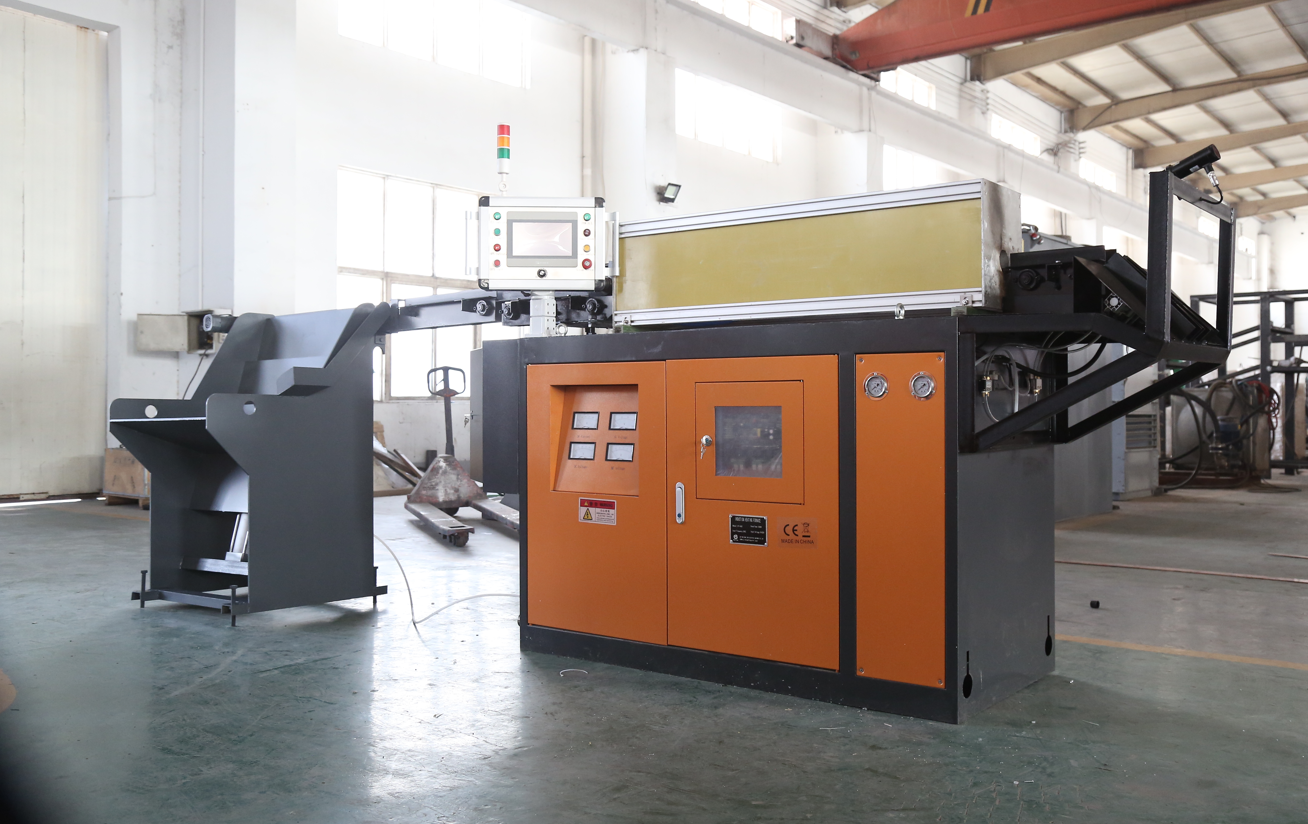Electric melting furnace – Suitable for all metal
Electric furnaces are a widely used piece of equipment in the metals industry, favored for their ability to melt a wide range of metals efficiently and cleanly. These furnaces use electrical resistance heating elements to generate heat that heats the metal above its melting point. Here are some key facts about electric furnaces and their suitability for a wide range of metals:

– Versatile:
Electric furnaces can melt gold, silver, copper, brass, aluminum, steel alloys, and even precious metals such as platinum and palladium. The specific metals that can be melted depend on the design, size, and power capabilities of the furnace.
– Cleanliness:
Electric furnaces generally provide a cleaner melting process than other furnaces, without the generation of fumes or other pollutants, making them suitable for applications that require high purity metals.
– Temperature Control:
Electric furnaces provide precise temperature control, which is critical for melting metals with a narrow temperature range or achieving specific alloy compositions, and can be achieved through programmable thermostats or advanced control systems.
– Efficiency:
Electric furnaces are generally more energy efficient than other types of furnaces because the electrical energy is directly converted to heat with minimal losses. In addition, electric furnaces can be turned on and off quickly, making more efficient use of energy.
– Safety:
Electric furnaces are designed with various safety features, such as automatic shutoff systems and temperature sensors, to prevent overheating or other potential hazards. It is important to follow safety protocols and operate according to manufacturer instructions.
– Maintenance:
Electric furnaces require periodic maintenance, such as cleaning heating elements and checking for electrical problems, but with fewer moving parts, there is less wear and tear, and maintenance costs are lower.
Overall, electric furnaces are a versatile and efficient option for melting a variety of metals. Their cleanliness, precise temperature control, and energy efficiency make them a popular choice in the metal industry. However, it is critical to select the right furnace for your specific application and follow proper safety procedures.
90All metal electric melting furnaces must meet specific standards to handle the different melting points and properties of different metals. Here are the main features and considerations:
Features
1. Temperature Range
– High temperatures, typically up to 2000°C (3632°F), are required to melt refractory metals such as tungsten or tantalum.
2. Crucible Material
– The crucible must be made of a material that can withstand high temperatures and is chemically compatible with the metal being melted, such as graphite, alumina, zirconia, or ceramic composites.
3. Heating Elements
– The heating elements must be made of durable materials such as Kanthal, molybdenum disilicide (MoSi2), or silicon carbide (SiC) that can withstand high temperatures and rapid heating cycles.
4. Temperature Control
– A sophisticated temperature control system (PID controller) maintains the desired temperature and minimizes fluctuations.
5. Insulation
– Use high-quality insulation materials to minimize heat loss and increase energy efficiency, such as ceramic fibers or refractory bricks.
6. Safety Features
– Ensure the equipment has over-temperature protection, emergency shut-off, proper ventilation, and a solid structural design to ensure operator safety.
Types of metals and their melting points
– Aluminum: ~660°C (1220°F) – Copper: ~1085°C (1985°F) – Silver: ~961°C (1763°F) – Gold: ~1064°C (1947°F) – Iron: ~1538°C (2800°F) – Steel (varies by type): ~1370°C to 1540°C (2500°F to 2800°F) – Titanium: ~1668°C (3034°F) – Nickel: ~1455°C (2651°F) – Tungsten: ~3422°C (6192°F)
Recommended brands and models
1. Paragon SC Series 2. Deltech Furnaces 3. RapidFire, a benchtop furnace company Pro 4. Indutherm MC Series
Other Considerations
– Power supply:
Ensure compatibility with your electrical infrastructure (single-phase or three-phase power).
– Cooling system:
Adequate cooling to prevent overheating of furnace components.
– Capacity:
Choose a furnace size that matches the size of your operation, from small benchtop models to large industrial models.
If you would like to learn more about a specific type or model of electric furnace, please let us know.
What type of furnace is used for steel?

